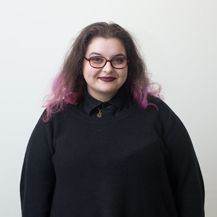‘Heathers’ reboot isn’t diverse, it’s insulting

Compassion for Syrians cannot be conditional
February 5, 2018
One of the greatest tropes of film and television history centers on the underdogs who fight the oppressors. Embodying historic resistance to fascism, the rebels in “Star Wars” rise up against the Empire. In “Shawshank Redemption,” viewers cheer for protagonist Andy Dufresne as he exposes the prison guards’ crimes and resists injustice.
In the 1988 film “Heathers,” the popular girls in high school, known as the Heathers, become the perfect metaphor for privilege. As thin, white, cisgender and financially well-off teenagers who love to terrorize their classmates for their differences, the Heathers are an apt representation of the villains young people who don’t fit the norms confront every day.
The trailer for the television reboot of the film, however, gets that representation wrong to a frustrating extent.
Released Jan. 18 by Paramount Network, the trailer shows the reboot will closely follow the original plot. Protagonist Veronica Sawyer and her sadistic boyfriend JD want revenge against the Heathers because of their bullying. However, the new Heathers represent groups that have traditionally been the targets of bullying: a plus-sized girl, a black girl and a genderqueer character.
Some have lauded this casting decision as making a stride in diversity, but what is so progressive about making already underrepresented groups the villains in a television show?
The trailer makes it obvious that the new Heathers are meant to be viewed in the same negative light as their original incarnation, constantly making references to how marginalized people can be evil through the short bits of dialogue in the clip. One character in the two-minute trailer even says, “Fat kids can be popular.”
Brendan Scannell, who plays genderqueer Heath Duke in the reboot, told Deadline in a Jan. 15 article, “Our modern retelling centers around marginalized communities—a plus-size, a black girl and a queer—trashing everyone around them.”
What is also telling is another aspect of the film that has been left unchanged. Like the original film, Veronica Sawyer is still a thin, white and cisgender character. The reboot trailer shows an offensive role reversal that refuses to acknowledge realistic power imbalance while half-heartedly pandering to pleas for diversity.
The reboot has corrupted the commentary evident in the original film. Through high school relationships and feuds, the original showed viewers that those with privilege wield their power over those who don’t.
Marginalized groups—including people of color, transgender people and plus-size people—have been cast for generations as the ones deserving of violence in our culture and media. This television show is not revolutionary in its casting, and it is a dark reminder that much of the public does not understand the concept of diversity.
Having diverse characters represented in media is more than just freely giving roles to people whose identities we rarely see on screen. Diversity is about accurate and honest representation that combats the dehumanization marginalized groups have and continue to face.
Black, transgender or plus-size young people aren’t fighting for representation to be told they are hated; they are fighting to watch stories that can empower them and give them at least a temporary escape from the real world where their agency, existence and right to happiness are constantly denied. The makers of the “Heathers” reboot have forgotten whom the underdogs really are.







